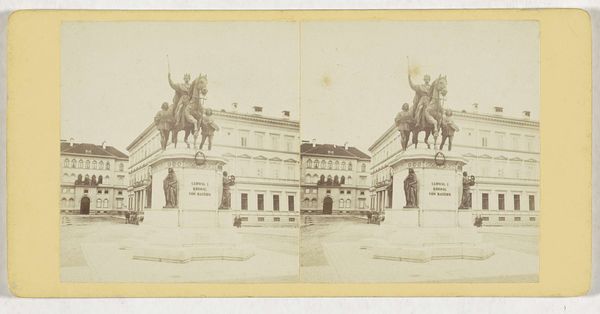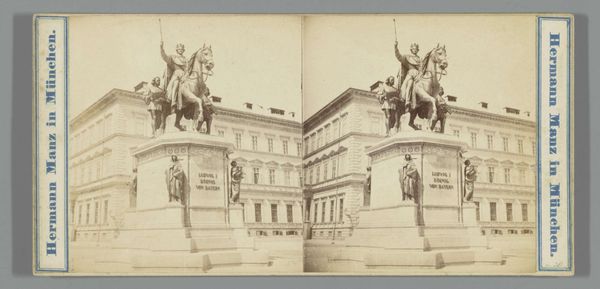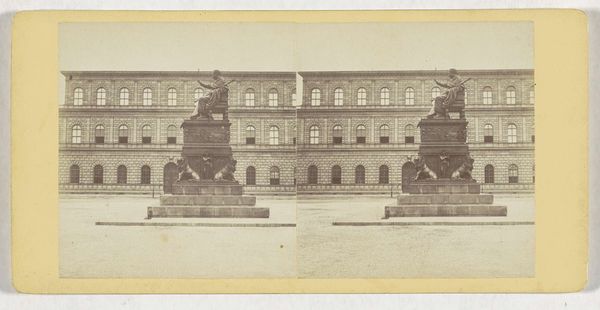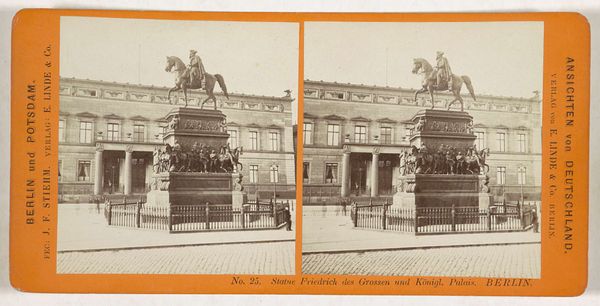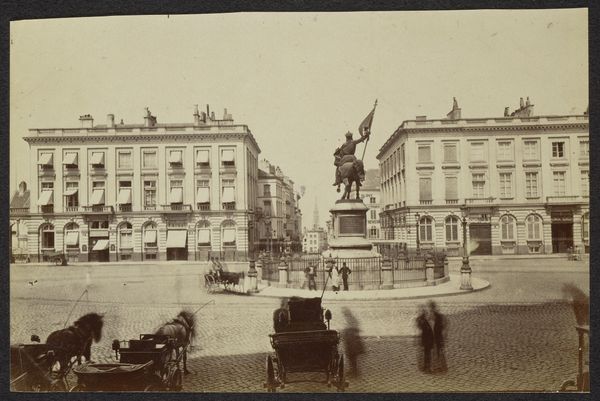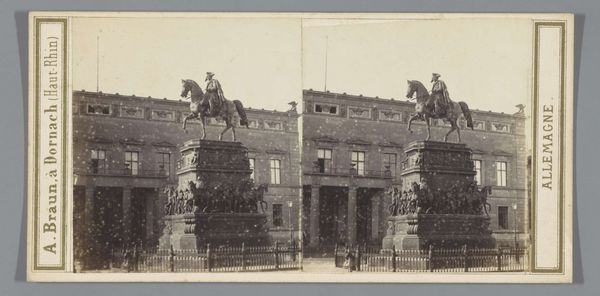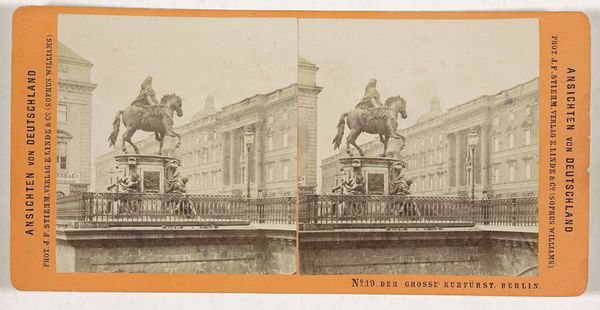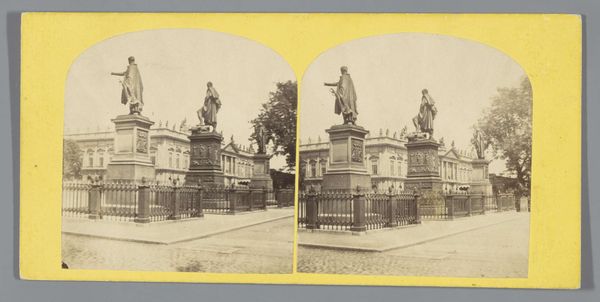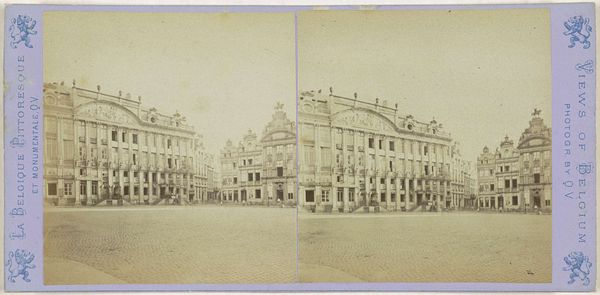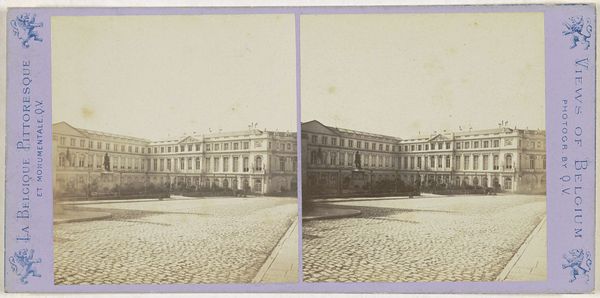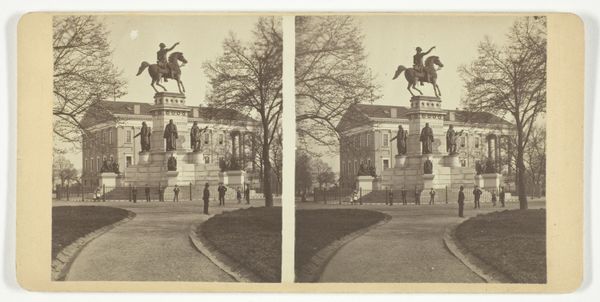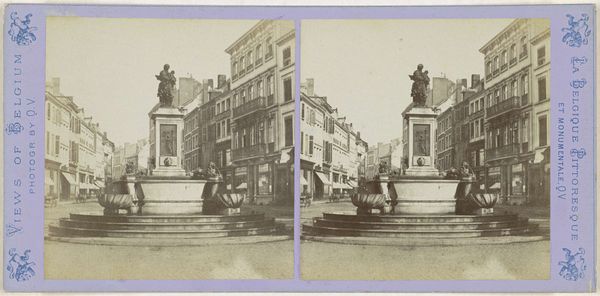
Standbeeld van Godfried van Bouillon op het Koningsplein in Brussel 1866 - 1870
0:00
0:00
Dimensions: height 87 mm, width 177 mm
Copyright: Rijks Museum: Open Domain
Curator: Welcome. This photographic print, created between 1866 and 1870, captures the statue of Godfrey of Bouillon in the Place Royale, Brussels. Editor: Imposing. The architecture's sharp angles—the rigid geometry of the square—only amplify the statue’s powerful stance. Its sheer, unyielding symmetry is quite striking, no? Curator: Indeed. The photograph’s strength lies in the sharp contrast it strikes. Notice how the city's architectural structure sets off the intricate details of the Neoclassical statue, grounding it firmly within a specific cultural and political moment. The artist skillfully utilizes light to accentuate this interplay, don't you think? Editor: Precisely. The way the flag stands boldly against the backdrop… It acts as an immediate marker of triumph and a visible standard. For those unfamiliar, Godfrey was, of course, a key figure in the Crusades, no? So this flag works, in some sense, as both historic emblem, but also one heavily freighted with ideological significance. How was the original statue received, do we know? Curator: Its symbolism proved very divisive; representing, as you indicate, complex historical interpretations and Belgium's nation-building. Beyond representation, the very composition exhibits classical ideals. Observe how it seeks balance and clarity to achieve, ultimately, a vision of order, you might say. Editor: Quite, its classical aesthetic speaks of a desire for timelessness—for historical continuity and the idealization of specific leadership values, I suppose. Its rigid composition can't obscure what's also at stake here; this very statue can spark discussions around the ethics of heroic representation, in that regard, even today. Curator: Absolutely. Ultimately, by focusing our attention on structure and form, we see this photographic rendering as so much more than just a document. Editor: And through an iconographic lens, its value resides less in aesthetic merit and more as an artifact that carries heavy significance. A fascinating study.
Comments
No comments
Be the first to comment and join the conversation on the ultimate creative platform.

